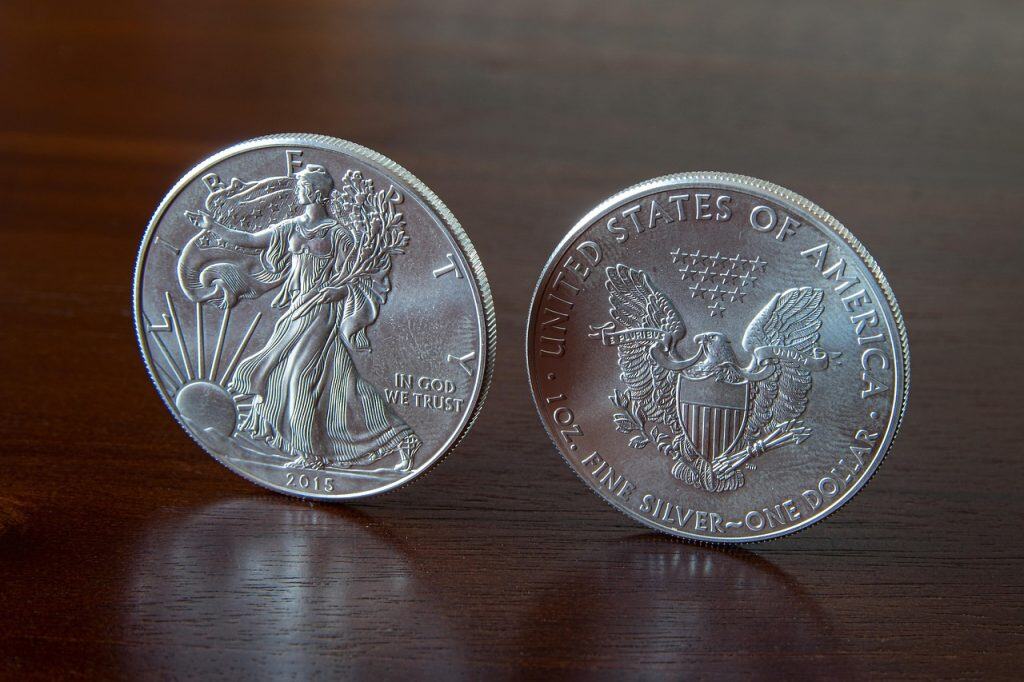Investing in precious metals has long been a strategy for those looking to diversify their portfolios and hedge against market volatility.
Among these metals, gold, silver, platinum, and palladium each have unique attributes that can influence their investment appeal. Let’s explore each one in depth and see what makes them tick.
Gold
Gold has been cherished for centuries, not just for its beauty but also for its universal acceptance as a store of value.
When economies face uncertainty, gold often shines the brightest, serving as a refuge for investors looking to protect their wealth.
Its liquidity is another significant advantage; gold can be easily bought or sold in various forms, from coins to bars.
Historically, gold prices tend to rise during economic downturns. This inverse relationship with the stock market makes it an attractive option for risk-averse investors.
If you’re exploring options for buying physical gold, check out Money Metals for a trusted and transparent buying experience.
Moreover, with central banks around the world continuing to accumulate gold, its perceived value remains robust.
However, potential investors should keep an eye on gold’s price fluctuations, which can be influenced by various factors, including interest rates and geopolitical tensions.
Silver

Silver differs from gold in its dual role as both a precious metal and an industrial commodity.
Its importance in technology—ranging from electronics to solar panels—adds a layer of complexity to its investment profile.
Unlike gold, silver is more volatile; its price can swing dramatically based on industrial demand and market sentiment.
One of the most appealing aspects of silver investment is its accessibility. Silver coins and bars are often more affordable than gold, making it easier for new investors to step into the market.
Furthermore, silver tends to outperform gold during certain bull markets, particularly when demand for industrial applications surges.
Still, savvy investors should be cautious, as the same volatility that can lead to gains can also result in significant losses.
Platinum
Platinum is often overlooked, but it has its own niche appeal.
As one of the rarest metals on Earth, its scarcity can drive higher prices, particularly when demand spikes in industries like automotive manufacturing, jewelry, and electronics.
The metal is typically more expensive than gold due to its rarity and the costs associated with mining it.
The automotive industry, which uses platinum in catalytic converters, significantly impacts its price. Economic shifts and advancements in electric vehicles can influence demand for platinum.
Investors keen on platinum should stay informed about global industrial trends.
However, it’s worth noting that platinum’s market can be less liquid than gold or silver, which may pose risks for some investors.
Palladium
In recent years, palladium has emerged as a hot topic among investors. Its significant role in automotive catalytic converters—especially in gasoline engines—has propelled its demand.
The metal’s relative scarcity has led to dramatic price increases, making it attractive for investors looking for high-risk, high-reward opportunities.
However, like platinum, palladium’s market is influenced heavily by the automotive industry. The rise of electric vehicles poses potential risks to palladium’s future demand.
Investors should weigh these factors carefully and consider whether the current price trend aligns with their long-term investment strategy.
While palladium may offer exciting potential, it’s essential to approach it with a keen understanding of the risks involved.
Investment Vehicles: How to Get Involved
Investing in precious metals can be approached in various ways. Physical ownership involves buying coins or bars, which can provide a tangible sense of security.
However, storage and insurance costs can add up, making it essential to factor these into your investment plan.
Another option is investing in exchange-traded funds (ETFs) that track the price of these metals. ETFs allow for easier trading and eliminate the need for physical storage.
Market Trends: Keeping an Eye on the Horizon
Market conditions can sway the price of precious metals dramatically. Economic indicators, inflation rates, and geopolitical events all play a role in shaping the investment landscape.
For example, a declining dollar value typically boosts gold and silver prices, making them more attractive to investors.
Technological advancements also impact these markets. For instance, innovations in mining techniques can lower production costs, affecting supply.
Conversely, increasing demand for green technologies might bolster silver and palladium prices. Staying informed about these trends is crucial for anyone serious about investing in precious metals.
Diversification: A Balanced Approach
When considering which precious metal to invest in, diversification is vital. Each metal behaves differently under varying market conditions.
By spreading investments across gold, silver, platinum, and palladium, investors can potentially mitigate risk and stabilize returns.
For instance, during periods of economic growth, silver and platinum may outperform gold. Conversely, in times of crisis, gold might offer more stability.
This kind of thoughtful approach to diversification can help investors navigate the ups and downs of precious metal markets with greater confidence.
Risks to Consider
Investing in precious metals is not without its pitfalls. Price volatility can lead to sudden gains but also steep losses.
Investors should approach the market with a clear strategy, setting realistic expectations for returns. Market sentiment can shift quickly, influenced by everything from economic reports to political developments.
Furthermore, the cost of buying and selling can impact overall returns. Fees associated with purchasing physical metals or trading ETFs can eat into profits.
Understanding these costs and how they affect your investment is essential for long-term success.
Seeking Professional Guidance
Given the complexities involved in investing in precious metals, seeking professional advice can be beneficial.
Financial advisors can help tailor investment strategies to fit individual goals and risk tolerance. They can also provide insights into market conditions and trends that may not be immediately visible to retail investors.
Engaging with professionals can help demystify the investment process, making it more accessible.
Whether through a financial planner or a dedicated precious metals dealer, having guidance can pave the way for smarter investment choices.


